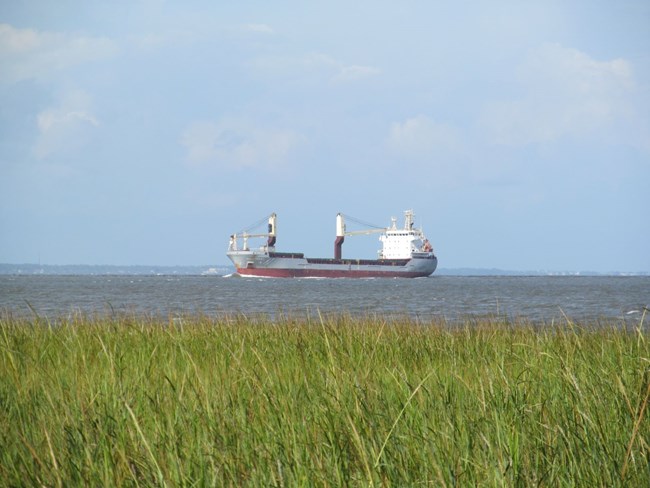
NPS Photo Threats to McQueen’s Island Salt MarshThe 4500 acres of McQueen’s Island Salt Marsh bordered by Lazaretto Creek, Tybee River, and St Augustine Creek comprise approximately 90% of Fort Pulaski National Monument. This pristine wetland provides an invaluable ecosystem service by filtering river water and improving the water quality of the monument while also serving as a refuge for protected bird, mammal, and reptile species. The area, which is one of the largest federally owned and protected salt marshes in the country, is recognized as a federal Marine Protected Area as well as class 2 waters for the recreational harvest of shellfish. Because the salt marsh generally appears to have been primarily affected by the forces of nature with minimal evidence of human activity and offers outstanding opportunities for solitude or primitive and unconfined recreation, it has been identified by the National Park Service as proposed for wilderness designation. Human activity threatens the McQueen’s Island salt marsh in many ways. Negligent fishing practices could affect local species populations and damage the larger marsh ecosystem. Noise and artificial light can change the natural environment of the salt marshes and the wilderness character of the area. Boating on McQueen’s Island can result in litter, resource disturbances from boat wakes and other activities, and inappropriate visitor use. Sea level changes can affect the environmental makeup of the salt marshes. Ocean acidification can cause disruptions in the ecosystem and dissolve juvenile oysters’ shells. Traffic on Highway 80 poses a threat to the diamondback terrapin and other marsh wildlife. All of these factors, and more, come together to present significant challenges to proper stewardship of McQueen’s Island marsh life. The onus is on all of us – park staff and visitors alike – to do our part to ensure that wilderness is properly taken care of. References Climate Change in National Parks (NPS Pamphlet) Fort Pulaski National Monument Foundation Document |
Last updated: February 1, 2025
